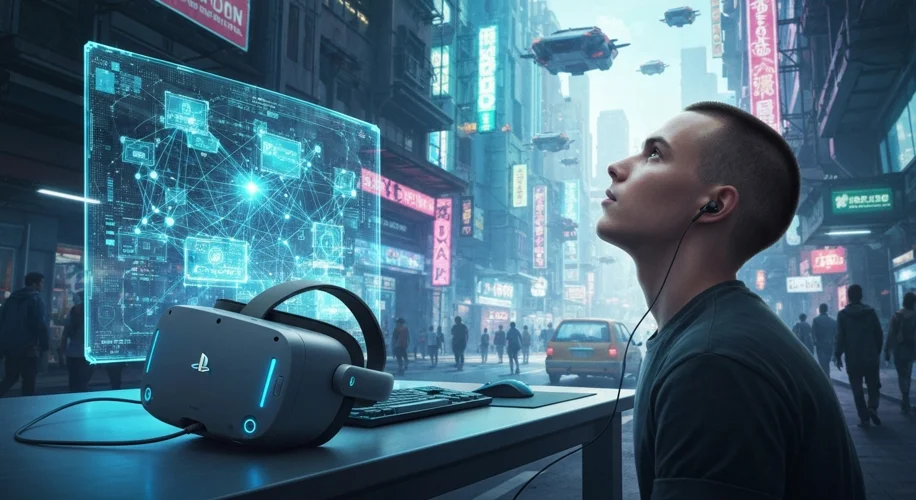Okay, so hear me out… remember when the PlayStation VR2 dropped and we were all buzzing about its fancy eye-tracking features? Things like dynamic foveated rendering, which basically means the headset can render where you’re looking in super high detail and soften the periphery to save processing power. Pretty cool, right? Well, for a while, those advanced features were locked to the PlayStation ecosystem.
But guess what? The open-source community, you know, the wizards who build awesome tools for all of us tech enthusiasts, have done it again. As of recently, there’s a community-developed driver mod that allows PlayStation VR2’s eye-tracking to work on a PC. This is seriously big news for anyone who’s invested in PSVR2 hardware but also enjoys the flexibility and power of PC VR.
Why is this a big deal? Let’s break it down.
Better Performance, Sharper Visuals: That eye-tracking tech? When used for foveated rendering on PC, it means your rig doesn’t have to work as hard to render every single pixel in ultra-high detail all the time. It focuses the graphical horsepower precisely where your eyes are looking. This can translate to smoother frame rates and the ability to push graphical settings higher in demanding PC VR titles. So, you can potentially get a sharper, more immersive experience without needing a beastly GPU.
Unlocking New Possibilities: Beyond just performance, this opens the door for developers to explore new ways to interact with virtual worlds. Imagine games that react to your gaze, or interfaces that become more intuitive because the system knows where you’re focusing. It’s a step towards making VR feel even more natural and integrated.
The Power of Open Source: This kind of development is exactly why I love the open-source community. It’s about taking hardware, understanding its capabilities, and finding ways to expand its utility beyond its original intent. It’s a testament to what passionate developers can achieve when they collaborate and share their work. It’s a win for innovation and for users who want to push the boundaries of what’s possible.
**Getting Started (The nitty-gritty):
**
Now, I’m not gonna lie, this isn’t a plug-and-play situation just yet. You’ll need to be a bit comfortable with setting things up, as it involves installing a custom driver and likely some configuration. You’ll also need to ensure your PC meets the general requirements for PC VR, and obviously, you’ll need the PSVR2 headset itself. Resources for these driver mods are typically found on platforms like GitHub, where the community shares their progress and instructions.
What’s Next?
It’s super exciting to see console VR hardware finding new life and enhanced functionality within the PC VR ecosystem. This development means more people can potentially tap into advanced features that were previously exclusive. It really blurs the lines and shows how interconnected the tech world is. I’m really curious to see how game developers on PC start to leverage this capability. It feels like we’re unlocking another layer of potential for VR immersion and performance.
So, if you’ve got a PSVR2 and a capable PC, this is definitely something worth checking out. It’s a fantastic example of the community driving innovation forward.

